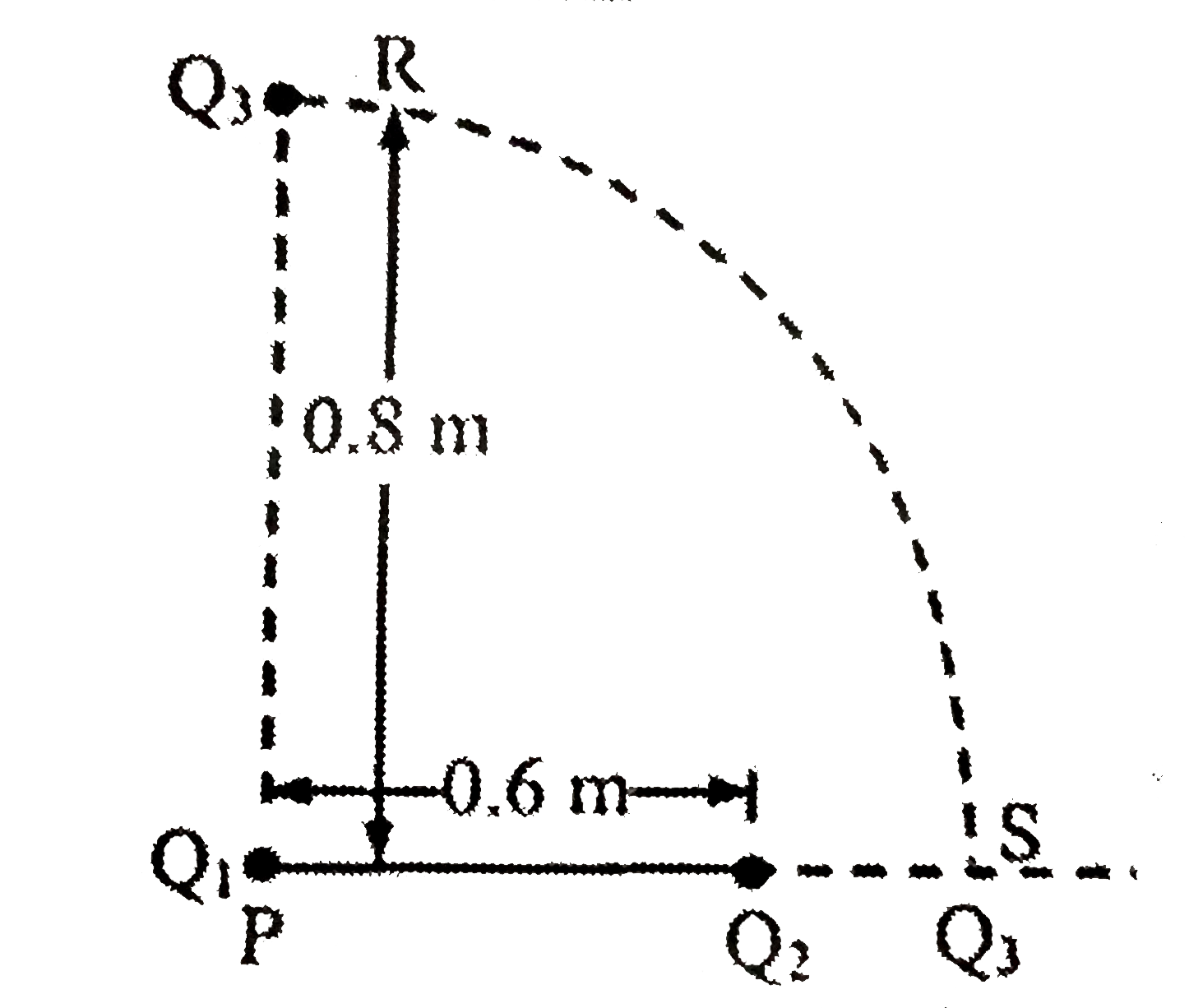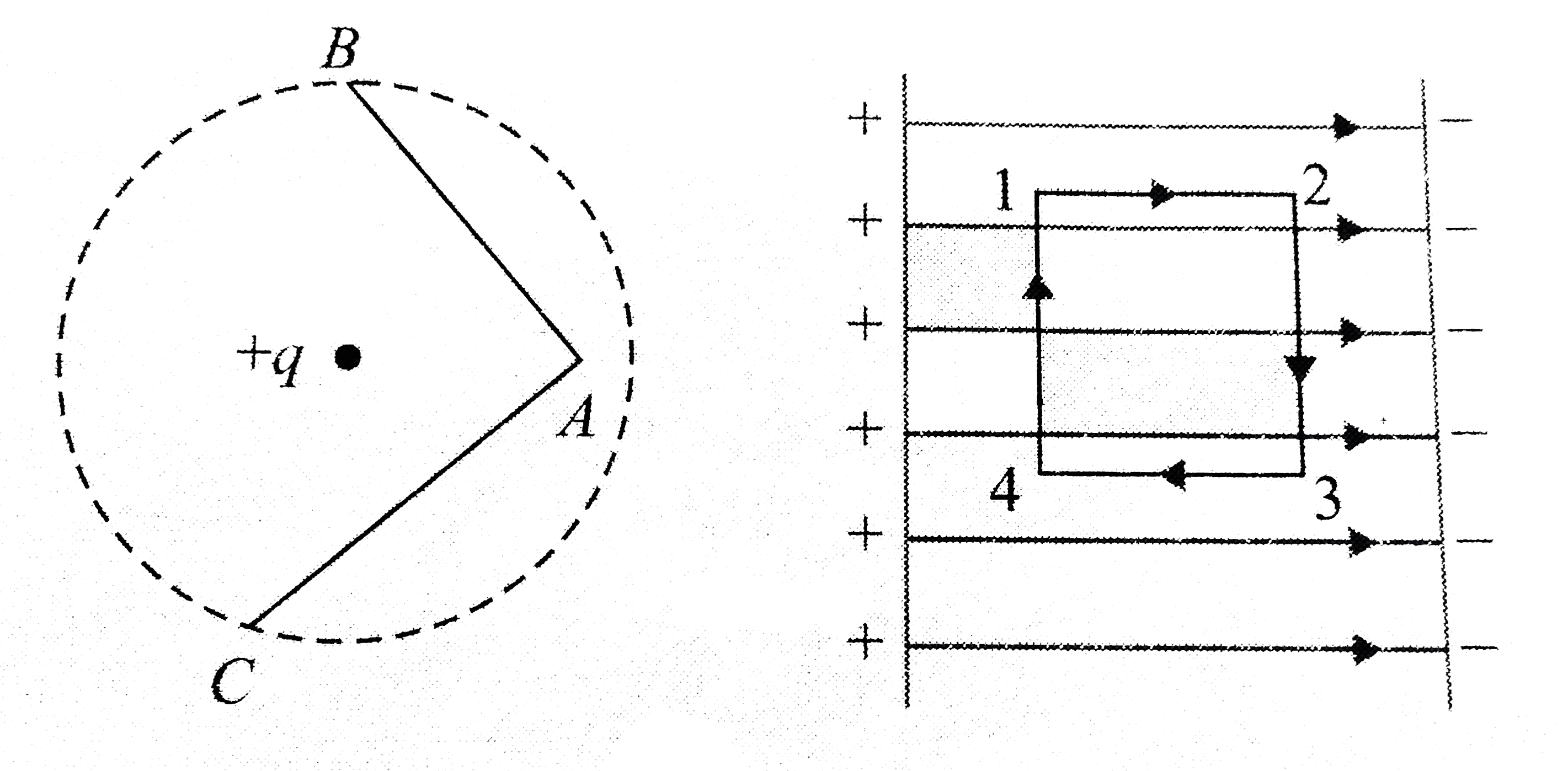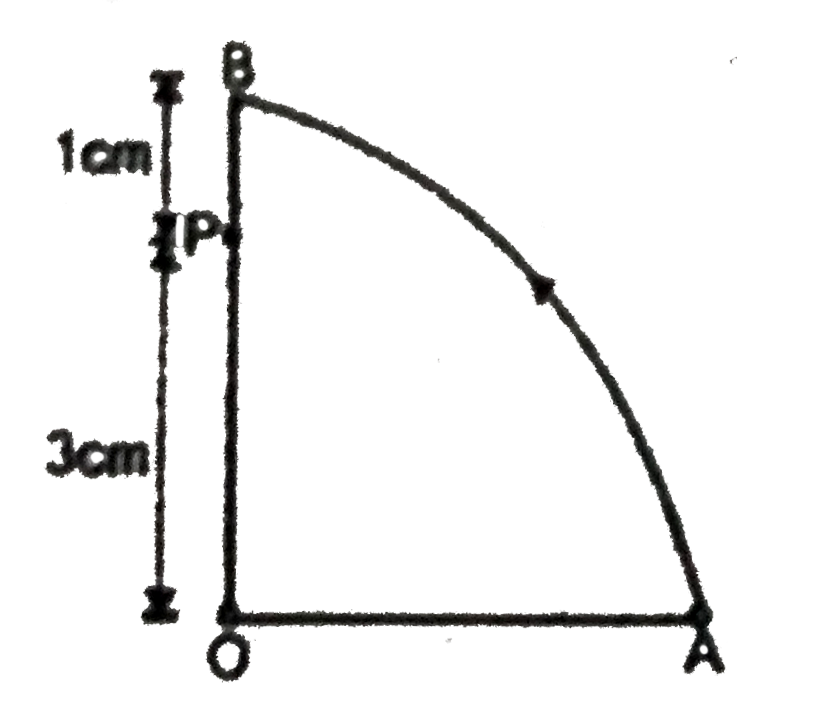The work done in moving an electron of charge 'e' and mass m from A to B along the circular path shown by arrow in figure in the vertical plane in the field of charge Q is

2mgr
zero
The correct Answer is:A
Topper's Solved these Questions
- ELECTROSTATIC POTENTIAL AND CAPACITANCEBOOK - NARAYNACHAPTER - ELECTROSTATIC POTENTIAL AND CAPACITANCEEXERCISE - EXERCISE - 3 (PREVIOUS AIPMT QUESTIONS)
23 Videos
- ELECTROSTATIC POTENTIAL AND CAPACITANCEBOOK - NARAYNACHAPTER - ELECTROSTATIC POTENTIAL AND CAPACITANCEEXERCISE - EXERCISE - 4 (NCERT EXAMPLAR PROBLEMS)
6 Videos
- ELECTROSTATIC POTENTIAL AND CAPACITANCEBOOK - NARAYNACHAPTER - ELECTROSTATIC POTENTIAL AND CAPACITANCEEXERCISE - Exercise-2(C.W)
53 Videos
- ELECTROMAGNETIC WAVES BOOK - NARAYNACHAPTER - ELECTROMAGNETIC WAVES EXERCISE - EXERCISE -4
15 Videos
- ELECTROSTATICS AND GAUSS LAWBOOK - NARAYNACHAPTER - ELECTROSTATICS AND GAUSS LAWEXERCISE - Intergers type question
11 Videos
Similar Questions
Knowledge Check
The work done in slowly moving an electron of charge e and mass m from A to B along semicircular path (as shown in the figure ) in vertical plane in the field of charge Q is .
 A−2 mgrB−QerC2mgr + 2QerDzero
A−2 mgrB−QerC2mgr + 2QerDzeroThe work done to move a unit charge along an equipotential from P to Q
Amust be defined as −Q∫P→E.→dlBis zeroCcan have a non-zero valueDboth (a) and (b)are correctTwo charges Q1 and Q2 coulombs are shown in figure. A third charge Q3 coulombs is moved from points R to S along a circular path. Change in potential energy of the charge is -
 AkQ1Q2Q3B4kQ1Q2C4kQ2Q3D23kQ2Q3
AkQ1Q2Q3B4kQ1Q2C4kQ2Q3D23kQ2Q3
The work done to move a charge along an equipotential from A to B
View Solutiona. A circle is drawn with center as a charge +q. What is the work done in moving a charge +q from B to C along the circumferebce of the circle ?
B In the above question, if the charge +q is first taken from B to A and then from A to C, on which path is the magnitude of work greater?

View Solutiona. A circle is drawn with center as a charge +q. What is the work done in moving a charge +q from B to C along the circumferebce of the circle ?
B In the above question, if the charge +q is first taken from B to A and then from A to C, on which path is the magnitude of work greater ?
 .
.
View SolutionA point charge of 5C is placed at point P (as shown in figure). A unit positive charge is taken from A to B along the circular path shown, then the net work done by electrostatic force is : [O is the centre of the circular path] [Where k=9×109Nm2/C2]

View SolutionThe work done to move a charge along an equipotential from A to B
View Solution
